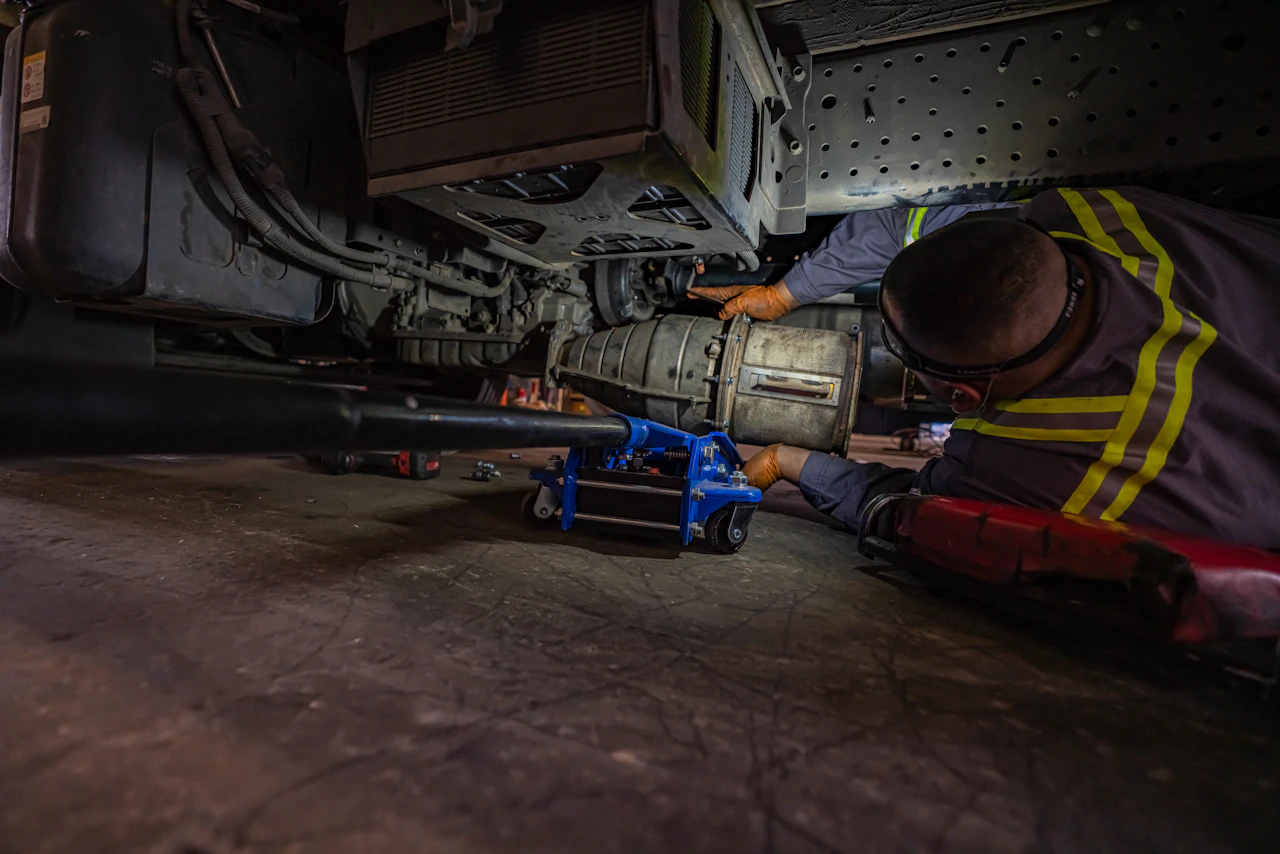DPF Maintenance and Aftertreatment Tips for Fleet Longevity
Modern diesel trucks don’t just run on fuel and grit—they run on complex emissions systems that need proper care to stay compliant and on the road. And at the center of that emissions puzzle? The Diesel Particulate Filter (DPF).
Fleet managers in Edmonton, AB, know the sting of downtime caused by aftertreatment failures. Clogged filters, failed sensors, and regen issues can snowball into expensive repairs, missed deadlines, and unhappy clients. But with smart preventive practices, you can keep those DPF systems humming—and extend the life of your entire fleet.
This guide dives deep into DPF maintenance and aftertreatment tips that will keep your trucks rolling longer and cleaner.
What Is a DPF and Why Does It Matter?
A Diesel Particulate Filter is a component in your aftertreatment system designed to capture and store soot and ash produced by diesel combustion. Without it, particulate matter would be released into the atmosphere, failing emissions standards and harming air quality.
But here’s the kicker: DPFs don’t last forever. As they trap carbon, they eventually clog—and if ignored, they can overheat, cause engine de-rating, or even lead to complete shutdowns.
Understanding the Regeneration Process
Your DPF needs to clean itself regularly through a process called regeneration. There are three types:
- Passive Regeneration: Happens automatically during high-speed, high-heat driving.
- Active Regeneration: Initiated by the ECM when passive regen isn't sufficient—injects extra fuel to increase exhaust temps.
- Forced Regeneration: A manual procedure done with a diagnostic tool when the filter is too clogged for auto regens.
Action Tip: If your fleet mostly runs local routes or idles a lot (common in Edmonton’s stop-and-go conditions), passive regens may rarely occur, making active and forced regens essential.
Signs Your DPF Needs Attention
A failing or overloaded DPF doesn’t just fail quietly. Look for these red flags:
- Loss of power
- Check engine light
- Increased fuel consumption
- Frequent regens
- Exhaust system overheating
- Vehicle in limp mode or de-rate
Ignoring these signs can stress your SCR system, EGR valves, and even lead to cracked turbos due to excessive backpressure.
DPF Maintenance Best Practices
Keeping your DPF healthy is about being proactive, not reactive. Here’s how:
1. Follow a Cleaning Schedule
Even with regular regeneration, ash builds up inside the DPF over time. Manufacturers recommend cleaning the DPF every 200,000 km (or sooner for severe duty cycles).
Action Tip: Use bake-and-blow cleaning or liquid flushing with certified technicians to restore the DPF to near-new condition. Avoid roadside shortcuts—they often cause more harm than good.
2. Monitor Sensor Health
Your DPF depends on pressure differential sensors, temperature sensors, and NOx sensors to function correctly. If one of these fails, the system might skip regeneration entirely.
Action Tip: Run a scan tool diagnostic during every PM service. Replace faulty sensors early—don’t wait for the check engine light to become a regular part of your dashboard.
3. Use the Right Oil and DEF
Cheap engine oil may have high ash content, which increases soot load on your DPF. And contaminated or incorrect Diesel Exhaust Fluid (DEF) can throw your SCR system into chaos.
Action Tip: Use low-ash, CJ-4 or CK-4 oil and only certified DEF. Keep DEF tanks clean and never top off from jugs left open to the air—moisture and contamination are enemies.
Aftertreatment System Care Beyond the DPF
Your DPF is part of a larger emissions ecosystem. Give these components the TLC they deserve:
- DOC (Diesel Oxidation Catalyst): Oxidizes carbon monoxide and hydrocarbons before reaching the DPF. If clogged, it reduces regen efficiency.
- SCR (Selective Catalytic Reduction): Injects DEF to reduce NOx emissions. Needs proper DEF dosing and clean filters.
- EGR System: Recirculates exhaust to reduce combustion temperatures. Dirty EGR valves can spike soot production and DPF loading.
Action Tip: Inspect and clean the EGR cooler and valve during every DPF service to keep soot output manageable.
Edmonton-Specific Maintenance Considerations
Fleet managers in Edmonton, AB, face unique challenges due to long winters, road salt, and cold starts.
Cold Weather Tip: Regens don’t complete properly when idling in freezing temps. If possible, schedule regen cycles after extended drives or perform forced regens during PM service intervals.
Corrosion Tip: Salt and grime can ruin DEF lines, sensors, and exhaust hangers. Regular underbody rinses and thorough winterization inspections will save headaches later.
When to Replace Your DPF
Even the best maintenance won’t make a DPF last forever. Most filters can be cleaned 3–5 times before the ceramic media breaks down.
Rule of Thumb: Replace the DPF after 600,000–800,000 km, or if scan tools detect a permanent restriction.
Book Your Appointment Today
Staying on top of DPF maintenance and aftertreatment system care is non-negotiable for fleet longevity. By following a strict PM routine, keeping regens on track, and monitoring sensor health, you can avoid breakdowns, fines, and downtime—especially in the harsh operating environments around Pattersonville, NY. Book your next service appointment with Kenfield Services today! For more information about truck preventive maintenance, check out our article on identifying tire wear.




.svg)
.svg)
.svg)
